The Mystery German Who Might Be the Start of Something Big

BOCA RATON, Fla. — On the Florida Pro Day circuit, Florida Atlantic comes last. During the final week of March, NFL personnel men made their way from Florida State on Tuesday to the University of Miami and Florida International on Wednesday, then to FAU on Thursday before flying home.
Tacked on the end of the list of 11 former FAU Owls working out at 8 a.m. was a player most of the scouts didn’t know they were there to see. He stood 6’ 4 ½”, was introduced to football in 2012 after watching YouTube highlights of Adrian Peterson and in his native Germany goes by the nickname “Silence.” (He’s a man of few words).
The football world is full of hopefuls who flock to workouts and regional combines with dreams of playing in the NFL. Most don’t have a chance. But on this humid morning in South Florida, something unusual happened.
Moritz Boehringer, a receiver for the German Football League’s Schwäbisch Hall Unicorns, began his pro day testing with the broad jump. One of the 30 team scouts in attendance showed him where the 10-foot mark was. “Show him 11 feet,” Boehringer’s trainer requested. They did, and Boehringer jumped to within an inch of the mark. Among receivers who worked out at the scouting combine in February, that would have tied for second-best.
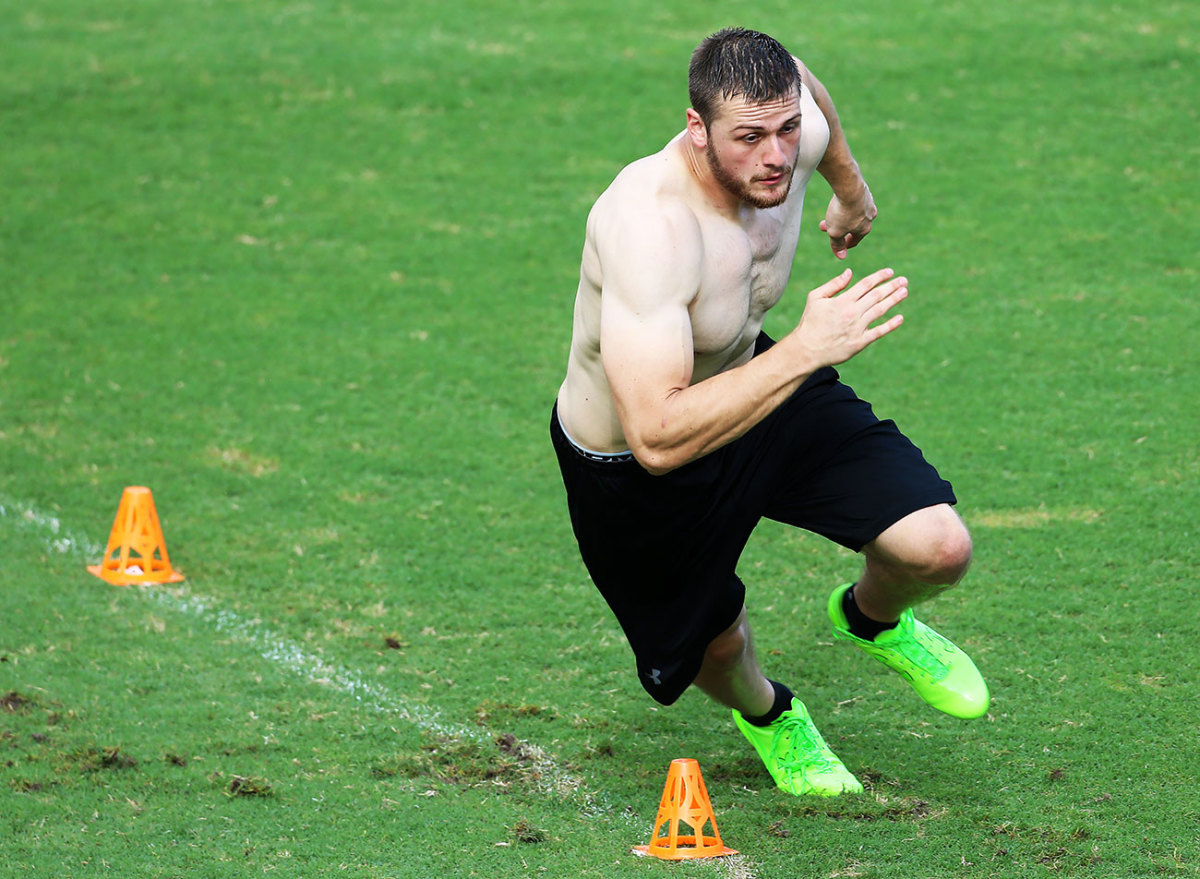
Next up, the vertical jump. Thirty-nine inches. That would have placed fourth at the combine. By the time Boehringer ran the 40-yard-dash, hand-timed on grass at between 4.43 and 4.5 seconds, Chiefs GM John Dorsey was on the phone with Boehringer’s agent, asking to set up a pre-draft visit in Kansas City. Teams only get 30 such visits with prospects who aren’t from their local area, and eight teams have allotted one of these visits to this largely unknown 22-year-old.
“I tried to get everything out of my body that was possible,” Boehringer said in well-practiced English. “I was pretty tired at the end, but I think I did pretty good.”
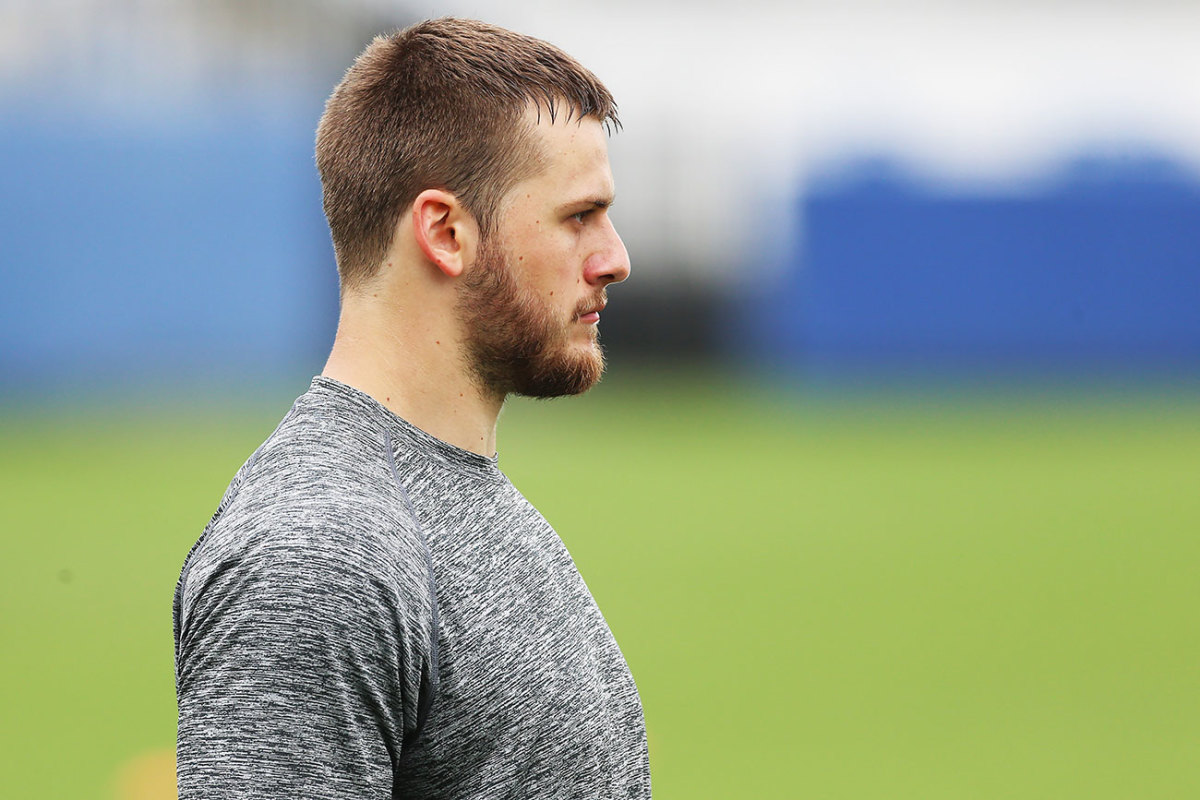
Four weeks earlier, Boehringer was a mechanical engineering student in Aalen, Germany, who drove 50 kilometers each way to practice American football once a week. Now he has a very real chance to be the first international player drafted into the NFL without having played college football. Who is he, and how did he get here?
The answer involves a two-time Super Bowl champion and a league intent on making American football a global sport.
🇩🇪, Mortiz is impressing.
— NFL UK & Ireland (@NFLUKIRE) March 31, 2016
6ft4
225lbs
40-yard dash - 4.42.
That is FAST.🏃💨 pic.twitter.com/7kpb0hPMzh
* * *
The story begins in London, at one of the NFL’s four branch offices outside the borders of the U.S. Last September, at the NFL UK office just off Oxford Circus, a new employee was banging his fist on the table—figuratively, we think—for a change to the league’s international strategy. “There is no way you can grow the game internationally,” Osi Umenyiora said that day, “unless you have international players.”
Just one week earlier the former NFL pass rusher had retired from a 12-year career that included two Super Bowls with the Giants. Umenyiora was born in London and raised in Nigeria, but his family moved to the U.S. when he was in high school, and he was drafted into the league after playing college football at Troy University in Alabama. He wanted to tap into the thousands of players competing in American football leagues in more than two dozen countries across the European continent, and beyond. “OK,” he was told. “Go find them.”
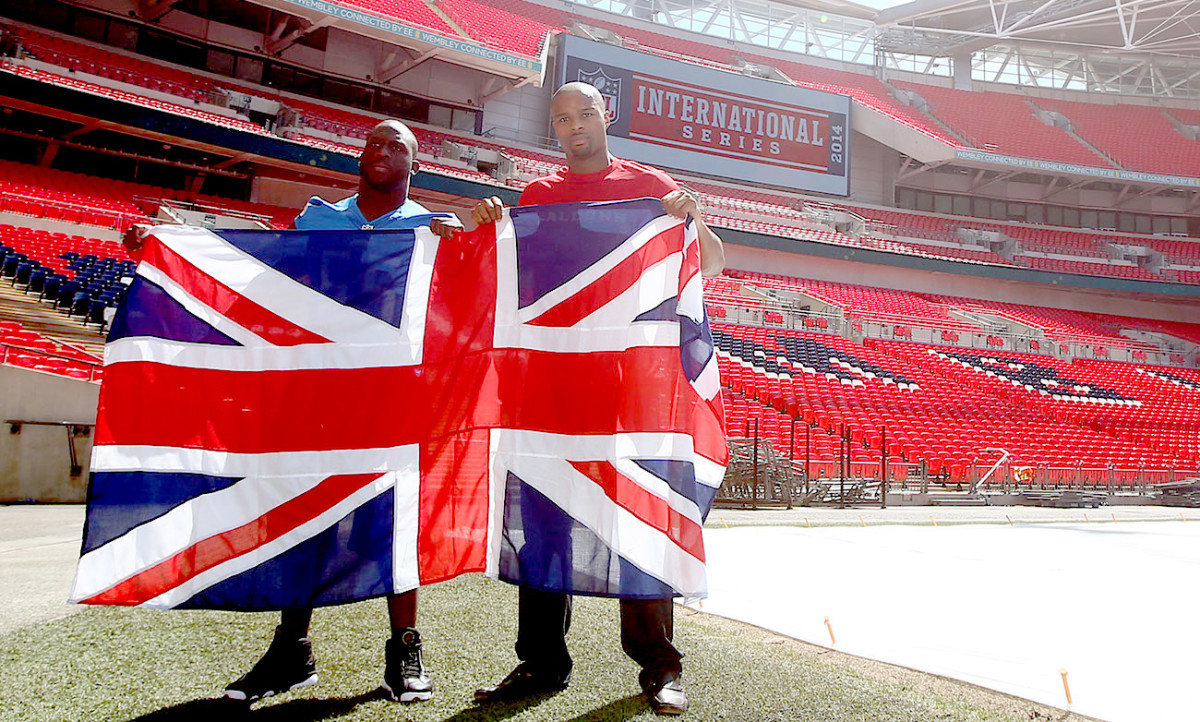
The NFL’s international strategy the past several years has been to grow a fan base and media coverage outside the U.S. by staging big-scale, premium events. The International Series, started in 2007, has expanded from one regular-season game a year at Wembley Stadium to four foreign games this coming season, three in London and one in Mexico City. Amateur participation in American football has grown in the U.K., and there are a handful of Europe-born NFL players who are ambassadors for the game—New England’s Sebastian Vollmer, Oakland’s Menelik Watson and Miami’s Jay Ajayi.
But there’s a wide gap between the NFL’s international showcase events and the grassroots growth of the sport outside the U.S. Bridging that was Umenyiora’s vision. “Yao Ming is what blew up basketball in China,” Umenyiora says. “People are nationalistic. They want to see their own countrymen doing well. You can’t grow the game in England if you don’t have British players. You can’t grow the game in China, like really grow it, if you don’t have Chinese players.”
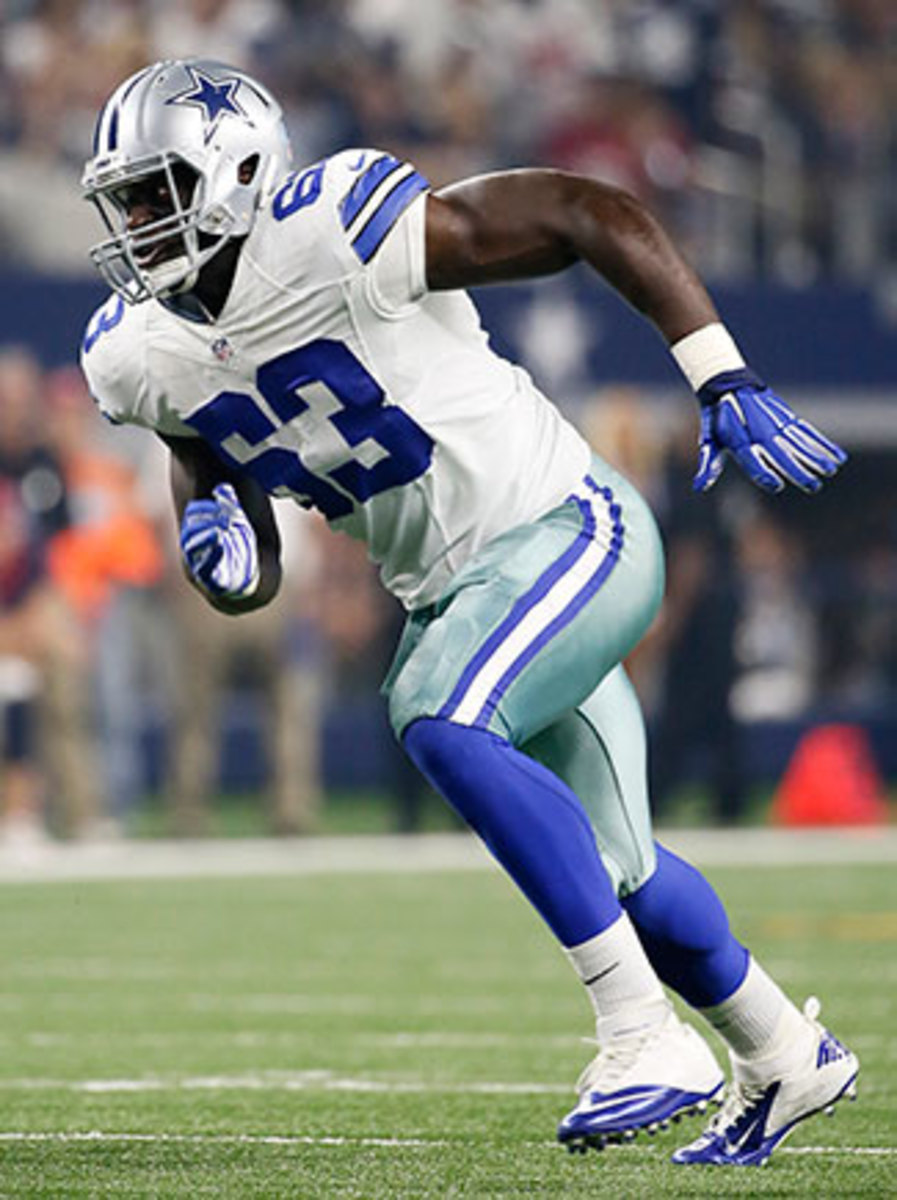
Easier said than done. American football is still a niche sport in Europe, and the highest level of football overseas is akin to perhaps Division III in the States. As The MMQB saw on our tour of Europe last summer, the best competition is in Germany, adult players truly play for the post-game pizza in Italy, and there’s a charming effort in Sweden to introduce the basic rules of the sport. Senior semi-pro rosters are made up of local players who play for the love of the game and a handful of paid imports from other countries. But the new international talent brokers for NFL UK, Umenyiora and former NFL Europe linebacker Aden Durde, were looking for the same things as the handful of NFL teams, like the Colts, who have scouts keeping an eye out for international talent: top-tier athleticism that doesn’t get lost in translation.
They also had a precedent. Two years ago, Durde joined the Dallas Cowboys for training camp as an intern coach. He returned to London and was coaching a local club team, the Warriors, when he spotted a unique skill set in one of his defensive ends, Efe Obada, whose day job was as a warehouse worker. He introduced Obada to the Cowboys’ coaching staff during their London trip in 2014; the following spring, after playing just five American football games, Obada was signed by the Cowboys. He spent last season on and off the Cowboys practice squad, and earlier this offseason he was signed by the Chiefs.
What does this have to do with Moritz Boehringer?
“We had a little bit of a harebrained idea,” says Alistair Kirkwood, the managing director of NFL UK. “And I’ll be honest, it was not intended to be as successful as looks like it is going to be.”
• THE MMQB IN EUROPE: Read our complete series on the potential and the quirks of football abroad.
* * *
The next part of the story begins with a French player who perfected his English by watching Top 100 videos on NFL.com. Anthony Dablé had gotten the football bug nine years ago after selling his collection of Nintendo 64 games to buy the NFL Quarterback Club ’98 with Brett Favre on the cover. He later made Deuce McAllister his avatar on MSN Messenger, and a friend who spotted that invited him to play for a club team in Grenoble, France, called the Centaures. This is how the game spreads in Europe—through pop culture or word of mouth, often randomly.
The dream of Umenyiora and his partners was to build an international pipeline to the NFL, but they figured they had to start slow. Kirkwood came up with the idea of bringing two European players to train in the U.S. and compete in a regional combine, and film their experiences for a European audience. No one thought the players they brought over would actually sign with teams. The NFL UK team simply wanted to create interesting digital content that would engage an international audience that largely forgets about football in the offseason.
“Yao Ming is what blew up basketball in China,” says Umenyiora. “People want to see their own countrymen doing well.”
“They would talk through from a first-person experience what they’ve done, how much they developed, then go back to Europe and everyone would have a better idea of the true athleticism of American athletes,” Kirkwood says. “In the spirit of being painfully obvious, we weren’t confident something was going to happen.”
Dablé was the first player they picked. By virtue of his 6’ 4” frame (his Twitter handle is Dablatron), he’d earned a brief stint in Canada a few years ago, before returning to Europe because of a paperwork issue. The last two seasons he was an import free agent for the best team in Europe, the New Yorker Lions in Braunschweig, Germany. (If you followed The MMQB’s Europe Week last summer, we were at the Eurobowl, where in a stroke of large coincidence, Dablé’s Lions beat Boehringer’s Unicorns to win the continental championship.) Also selected for the NFL UK foray into the U.S. was a 6’ 7” British tight end, Harry Innis.
Umenyiora, during his playing career, worked out with Tony Villani, who trains NFL veterans and prospects at his XPE Sports Academy in Boca Raton. That’s where Innis and Dablé flew in late January of this year. The plan was for them to train for a few weeks, attend the regional combine in Minnesota on March 5 and then fly back to Europe. NFL UK paid for their travel, their training and an apartment the two players would share.
But in mid-February, plans changed. Kyle Strongin, a former 49ers scout who is now a Nashville-based NFL agent, was at XPE visiting one of his draft clients when he saw Innis and Dablé working out. Their size impressed him. “Who are those guys?” he asked. That was a Friday. Intrigued, Strongin asked if he could send around their tape to a few NFL contacts. By Saturday the Seahawks were asking for Dablé to come in for a workout. By Sunday afternoon six other teams joined the queue.
Anthony has been impressing #NFL scouts along with English tight-end, Harry Innis! 🇬🇧 🇫🇷
— NFL UK & Ireland (@NFLUKIRE) February 18, 2016
📃👀https://t.co/nL68tnPwji pic.twitter.com/99zm2cFsbW
Umenyiora, who played a decade for the Giants, didn’t want his old team to miss out. He phoned GM Jerry Reese and arranged for both players to visit East Rutherford first. That Wednesday, Reese, head coach Ben McAdoo and other team decision-makers filled the Giants’ field house as Dablé and Innis went through a 12-minute workout. They caught two or three passes, did a 40-yard dash and ran six or seven pass routes. After the two had physicals in Manhattan, Reese called Dablé up to his office. The Giants didn’t want him to go on the rest of his visits—they wanted to sign him on the spot, before he left the building. New York offered a three-year minimum-salary deal but would guarantee $50,000 as a show of good faith.
“Jerry wouldn’t B.S. me,” says Umenyiora, who was known for having his share of contract battles with Reese during his Giants tenure. “He would tell me, ‘These guys, they’re not going to make it.’ But he was impressed. That’s when I said, we have something going right here, so now we have to go find another guy. And that’s when Moritz came.”
* * *
Boehringer quite literally turned NFL heads at FAU’s Pro Day. After his 40-yard dash, his performance in the three-cone drill to test agility had scouts glancing doubly at their stopwatches. His time was 6.65 seconds, same as Ohio State’s Braxton Miller. That would have placed Boehringer third among all receivers at the combine, and the fact that he was doing it with a 6’ 4” frame was enough, at least, for scouts to be intrigued.
He caught everything that came his way in the throwing session, but as even Boehringer admitted, “Without opponents, it should be no problem to catch the ball.” So the NFL contingent asked him run routes in the red zone against press coverage—something that’s not really part of the game in Germany. Then a Cardinals scout took him to midfield to test his blocking ability against a Florida Atlantic defender, a check to see if he might be able to play tight end. In the stands, he had a cheering crew that included Umenyiora, Dablé, Durde, Kirkwood and a five-person video team chronicling this experiment gone surprisingly right.
“I like the combination of mental and physical aspects,” says Boehringer. “I like to catch the ball and run.”
Toward the end of the workout, a half-dozen scouts swarmed the prospect’s agent for more information. Boehringer had also picked Strongin to represent him, via a WhatsApp message that read, “I choose you as my agent.” NFL teams needed to know even the most basic of information, from what his parents do (dad is an engineer, and mom is a part-time museum worker) to his favorite route (go route, obviously).
Boehringer’s football résumé is quite brief compared to most draft prospects. It was only four years ago that he first tried the sport with a group of friends in his hometown. There were only six or seven of them, so they couldn’t even field a team. They just practiced in a park. After a few months they joined a club in a town 45 minutes away.
“I liked the combination of the mental and the physical aspects,” Boehringer says matter-of-factly. “It is very tactical, like chess, but it is also with big bodies and fast bodies. I like to catch the ball and run.”
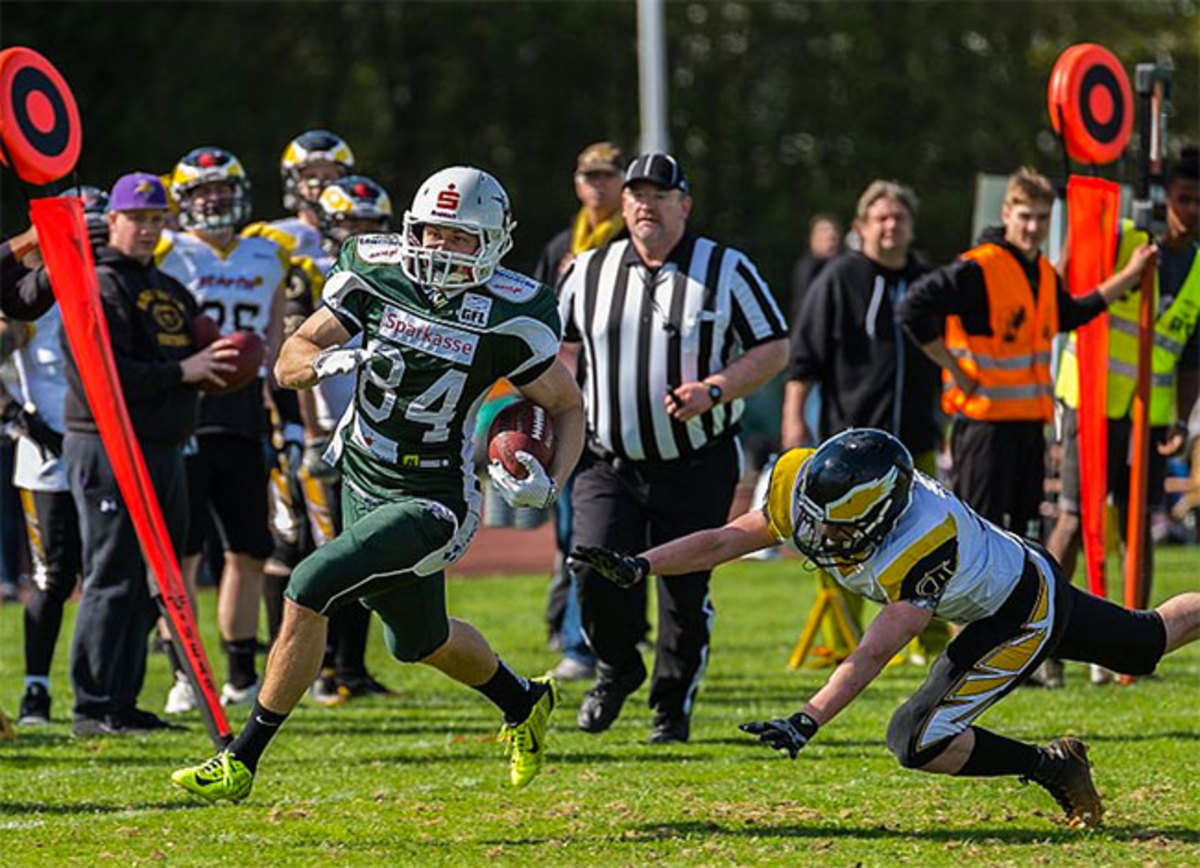
In 2015 a coach had sent Boehringer’s tape to the Unicorns, a team in the German Football League, which is the highest level of football in Europe. Boehringer joined the club and was named the league’s Rookie of the Year, with 70 catches for 1,461 yards and 16 touchdowns. That’s what caught the eye of NFL UK.
In February of this year, Durde reached out to Boehringer via a Facebook message, asking if he’d be interested in coming to the U.S. to train for two weeks. Boehringer thought it was a hoax and didn’t respond—until he heard from Dablé, his former GFL opponent, now a Giants receiver. Boehringer agreed to fly to Boca, telling his parents he’d be back in two weeks. That was Feb. 29.
“I could see a team drafting him late,” says one NFL assistant coach, “and seeing how far you can take him in six months.”
Boehringer happened to be exactly four years past his high school graduation date, so he was eligible to enter the NFL draft this year. (Dablé is 27 and had to go the free-agent route.) But it wasn’t until his Pro Day that anyone, including Boehringer, thought he might actually have a chance of getting drafted. “He opened some eyes,” one scout assured Umenyiora after his workout. Said another, “He’s a project, but on the other hand you can’t teach that height, weight and speed.”
Last fall, between the NFL’s new free-to-air package on German TV and the online Game Pass, he watched every Vikings game; now he was eating New York strip steak at the Capital Grille with a Vikings scout. There was enough interest surrounding Boehringer that his agent set up a second workout a week later in Florida with N.C. State QB Jacoby Brissett. Ten NFL teams came. They started with a classroom session to test Boehringer’s aptitude for learning formations, motions and alignments. Out on the field, one team’s wide receivers coach led him through a workout of non-traditional route concepts where he had to change directions or put a double move on the defender, checking his instincts and spatial awareness.
Bill Parcells, by the way, also happened to be in attendance.
* * *
It’s already been a strange football journey for Boehringer. Now, how far will it go?
“Athletically, you are intrigued,” said one offensive coach who has met with Boehringer. “I could see a team drafting him late and seeing how far you can take him in six months. But it’s a sport with so many nuances, so it’s going to be hard for him. Does he have the mental capacity to do it? Yes. But does he have the base of knowledge to relate? No.”
That’s the challenge of plucking players from countries where American football is a subculture, instead of part of the culture. At almost all levels of football in the U.S., receivers are asked to convert routes against certain coverages, but Boehringer has never done that. He never had to learn a traditional playbook, or go through an install. With the Unicorns, he’d line up on each play and look at the sideline, where a coach would hold up a card with a picture that told each receiver which route to run.
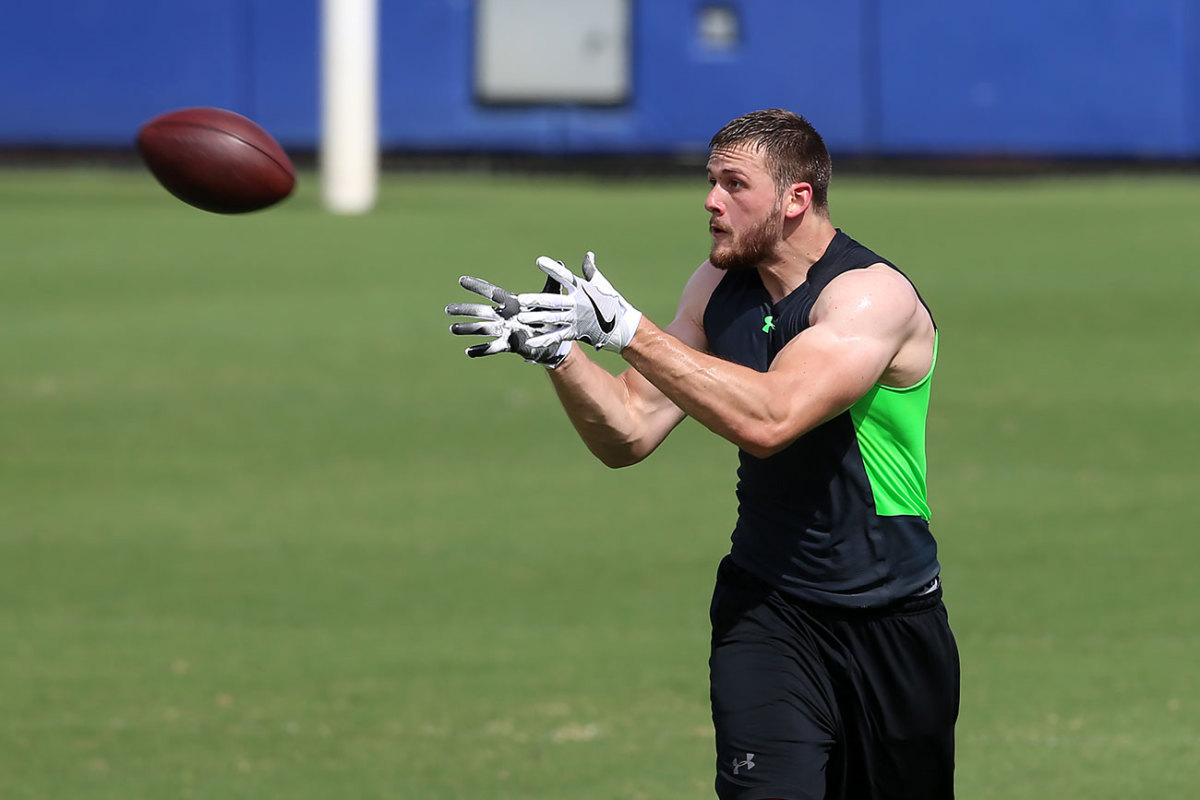
We asked Boehringer if he had seen press coverage in Germany? Not really. Why not? Maybe they just can’t play it?
But judging by the way players around him have taken to him, he’ll have plenty of help. At XPE, Pierre Garçon spent a few hours before Boehringer’s Pro Day working with him on ways to beat press coverage, and Anquan Boldin explained to him and Dablé that they should run at 80 percent speed in and out of their cuts on routes—the Europeans thought you always had to sprint at top speed. NFL teams were impressed by how well Boehringer took coaching at each of his workouts.
The offensive coach likened the buzz around Boehringer to that of a new video technology that sweeps the league—once one team shows interest, everyone else has to check it out so they’re not left out in the cold. That’s how the pre-draft process works. Still, what has happened the last few weeks is somewhat stunning: Teams are committing resources to attend a private workout, devoting a prized top-30 visit or talking about investing a late-round pick on a guy who was wholly unknown in NFL circles just one month ago.
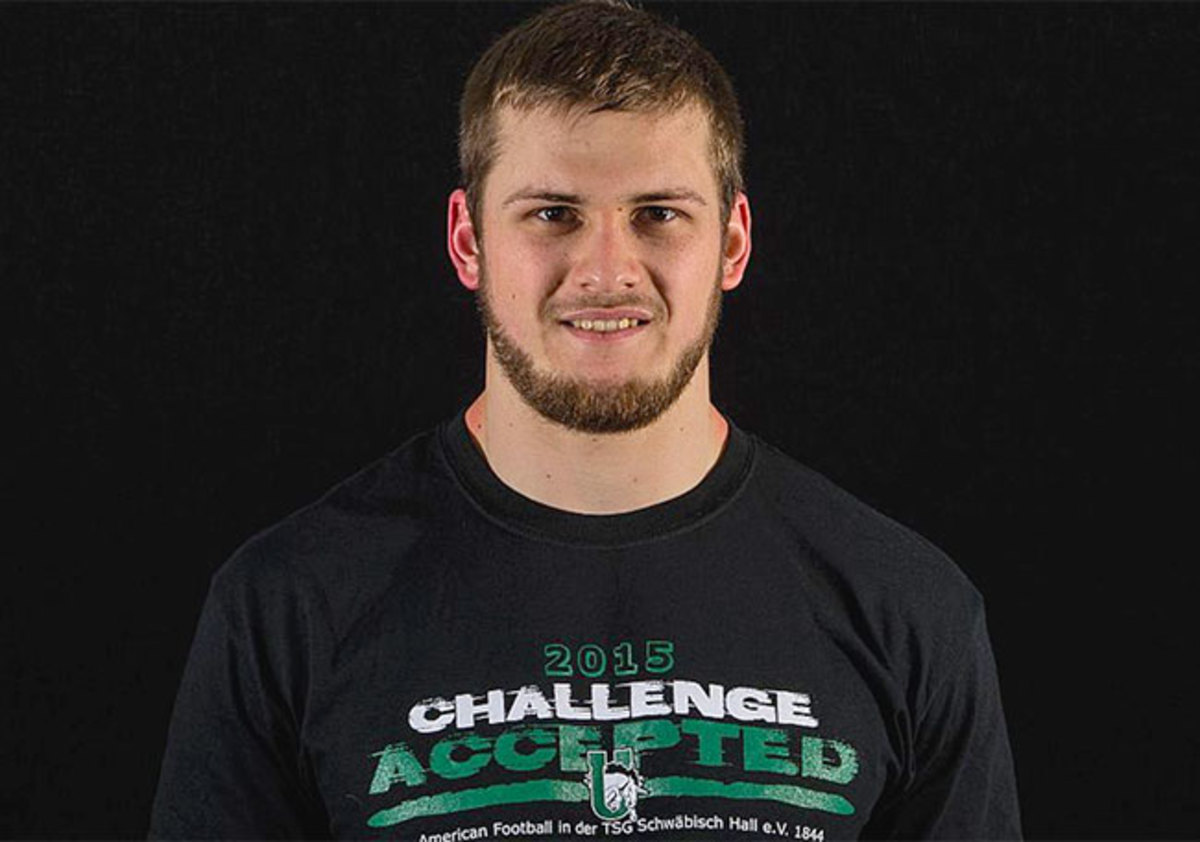
“The game is so big here, it’s really hard to get your mind around the fact that there are people outside America who can play here,” Umenyiora says. “And if I didn’t leave America to see it for myself, I never would have believed it.”
This may not become a full-fledged pipeline, though that is the goal. But Moritz Boehringer may be, at the least, forging a path to the NFL that didn’t exist before. And that gets a reaction even out of the guy nicknamed Silence.
“To get drafted would be pretty crazy,” Boehringer says. “Maybe my family would come and visit me in America sometime.”
